Love Letters to the Movies, Part 1: The Early Years
A three-part discussion of movies in love with the power of movies kicks off with a Buster Keaton classic and a charming fantasy film by Martin Scorsese.
Inspired by the end-of-the-year convergence of movies about the magic of making and going to the movies — specifically The Fabelmans, Empire of Light, and Babylon — we’re launching a three-part conversation about “love letters to the movies.” We’ll end the series with a discussion of those three movies, and what it might mean that we’re getting them all at once, but we’re going to kick off with two films from or about the silent era, Sherlock Jr. and Hugo. The first finds Buster Keaton getting deeper (and deeper) into movies as a napping projectionist wrongly accused of a crime. The latter finds Martin Scorsese revisiting the origins of 20th-century movie magic using the tools of 21st-century filmmaking.
Keith: Movies: we love ‘em! But we’re also a little worried about them, right? The introduction of streaming, advances in home theater technology, and pandemic-mandated theater shutdowns have all made the future of moviegoing itself look a little murky. Complicating matters is an alarming narrowing of what gets released to theaters. Comedies? Dramas for adults? You won’t find too many of those amidst the blockbusters. If we’re not at an inflection point (or “infraction point,” to borrow from Glass Onion: A Knives Out Mystery, a movie I saw during its one-week theatrical run, thanks to Netflix’s curious release strategy), it’s still hard to deny that things have changed and won’t be changing back.
But maybe we shouldn’t be too worried so long as the opportunity to lose yourself in a movie theater remains (not to get too Nicole Kidman-in-the-AMC-promo about it). This experience has served as the subject of movies themselves, if not from the very beginning then close to it. Buster Keaton’s 1924 film Sherlock Jr. almost certainly isn’t the first, but it’s hard to think of another film that explores how movies work (and the power they exert on viewers) so well. It’s famous as the film in which Keaton, as a snoozing projectionist who aspires to be a detective, walks into the screen finds himself in the middle of the action, but its tweaking of movie conventions start even sooner. The banana peel gag was already a slapstick cliché when Keaton made the movie, but Keaton (with writers Clyde Bruckman, Jean Havez, and Joseph Mitchell) finds a way to make it fresh by defying then fulfilling audience’s expectations. (Anton Chekov once said something about how a banana peel dropped in the first act… etc.) From there, we’re off, as Keaton first flits from one type of movie to another — and moves from one far-flung location to the next with each — before landing in the middle of a drawing room mystery that reflects his own personal drama then takes a murderous turn.
I’ve seen this movie many times and I honestly couldn’t tell you how Keaton pulled off some of the gags, and at this point I’m not even sure I want to know. But beyond being in awe of the technical accomplishments, this is just a masterful bit of cleverly constructed storytelling filled with wonderful gags. It’s moving, too. I love the final sequence in which our hero, his head already filled with movies as evidenced by his dreams, takes cues on how to romance his beloved by watching the action on the screen. It’s beautiful and it ends on a grace note of a gag that suggests there are consequences for buying into the movies’ idea of romance, like marriage and children. It’s both stunning and wise. Scott, how did this play for you and what does it say that it still looks insightful about how movies manipulate reality nearly 100 years later?
Scott: It’s perfection. 45 minutes, not a wasted shot, each sequence leading into the other with a combination of precision and breathless invention. I’m glad you pointed out the banana peel bit, because it’s a small gag that speaks to the larger purpose of Sherlock, Jr. As you said, audiences would have been well aware of the slipperiness of banana peels, but for Keaton to lay down the peel to embarrass his foe, only to slip on it himself, plays on that awareness—which is exactly how the film works. Keaton is inviting us to be conscious of our relationship to the events that happen on screen, and to the screen itself. And in that very same scene, as his would-be girlfriend and his romantic rival confer in the background, that space is opened up by a curtain between rooms and thus acts as a movie-within-a-movie.
The opening titles note that Keaton is playing “a movie picture operator,” but let’s go ahead and call him a projectionist, because that word is nice and suggestive, too. When he’s in the booth, he is projecting fantasies, not merely an illusion for the audience, but a place to project our own feelings and desires. In the real world, Keaton’s Projectionist is a hapless, penniless loser, unable to afford a nice confection box for The Girl, so he picks up the cheap one and makes it look like it cost four times as much. In the beginning, he’s reading from How to Be A Detective—and, hilariously, putting his own fingerprint on the cover so he can examine with a magnifying glass—but his efforts to solve the case of who stole the pocket watch either backfire (when the villain plants the pawn shop receipt in his coat) or are executed with comical literalness (“shadow your man closely”). One of the best and subtlest gags in the movie is The Girl simply walking over to the pawn shop, asking the clerk for a description of who sold him the watch, and cracking the case on her own. She didn’t need a book to do it.
The Projectionist having this out-of-body experience and dreaming himself onto the screen is, of course, the heart of Sherlock Jr. and the reason why it’s so special among Keaton’s films. For one, he gets to be “Sherlock Jr.,” the world’s greatest detective, no longer a low-wage loser in ratty clothes, but a sophisticate that only the elite-of-the-elite can presumably afford—and they’d be lucky at that. We can thrill at his confidence and good fortune as he works the case of missing pearls and dodges all the booby traps the villains have planted to kill him off. (The fate of the exploding 13 ball is so ridiculously deft.)
But then, we can also learn from a master how movies work. When The Projectionist gets on the screen, new locations and new perils are just a cut away: Dodging traffic, teetering on a cliff, just missing a train screaming through the desert, getting plopped into a jungle scene next to two lions, etc. Keaton stays trapped in the center of the frame as his situation keeps changing. The movie-within-a-movie also gives Keaton the opportunity to emphasize how films can use montage to link together sequences with a pleasing syncopation that life itself is too clunky to allow. There’s a chase here that shows off Keaton’s dexterity with sight gags and stunt work—setting up a disguise to slip into as he jumps out a window is a particular wow—and a context for audiences to be conscious of the wonders they might otherwise take for granted. And that ending? So sweet and funny, as you describe, and also a testament to the power of the edit. First comes love, then comes marriage, then comes baby in the baby carriage.
Cinema was still its relative infancy when Sherlock, Jr. came out, so nostalgia didn’t play a role in the love-letters-to-the-movies movie like it would nearly a century later, when Martin Scorsese took a crack at the family film with Hugo, his tribute to the earliest days of filmmaking. We’ll be talking a lot in this conversation about the context for why we’re seeing these tributes to the medium. What’s Scorsese up to here?
Keith: Before we get to that, we should at least acknowledge the long, lasting influence Sherlock Jr. has had on films like The Last Action Hero and The Purple Rose of Cairo. Like a lot of people, I’m more comfortable not talking about Woody Allen and his movies than talking about them these days, but The Purple Rose of Cairo is a movie that meant a lot to me when I saw it. It plays like a bittersweet companion to the Keaton film, depicting the power of cinematic fantasies but also the heartbreaking gulf that separates them from reality. It’s among my favorite of Allen’s films (and with that, I will now put it back in the vault with his other movies and close it again).
There’s bittersweetness in Hugo, too, even if the sweetness ultimately wins out. I hadn’t seen this film since it was in theaters and had forgotten just how sad and moving the sequence in which Georges Méliès (Ben Kingsley), believing his work to be lost and forgotten, discusses being passed over by changing times. Film preservation is a subject close to Martin Scorsese’s heart, which I have to imagine was part of what attracted him to Brian Selznick’s acclaimed children’s book. No doubt another part of the attraction was a chance to depict the magic of filmmaking in its infancy using all the tools available to a director working on a healthily budgeted studio film in the 2010s.
Hugo is very much a Scorsese film but it’s also a bit of an outlier. There aren’t many other whimsical, kid-friendly adventures in his filmography or films as conspicuously dependent on CGI effects as one of the Marvel movies that fill Scorsese with indifference. (I say “conspicuously” because he hasn’t been shy about using CGI even when it’s not immediately apparent.) It was also released in 3-D at a time when that process was all the rage and I remember the 3-D being quite impressive, though that’s now a bit lost at home.
Watching it again, it plays a bit like a love letter inside a love letter, doesn’t it? On the one hand,we get the lovely tribute to Méliès and all he represents. But it’s wrapped up in a film that’s a bit like a 2011 version of a Méliès film, where nothing looks real and it’s all the more wondrous for it. I also love the rhymes between images from early films like the Lumieres’ “The Arrival of a Train” and crowds reacting to an image of a train in terror and Hugo’s dream (later made reality) of staring down a speeding locomotive. It’s lovely! Did it hold up for you, too?
Scott: Hugo has become something of a staple in the Tobias household, because Scorsese is my filmmaking hero and there’s not a lot from his filmography that’s friendly to young children. I don’t think I had a better experience reading to my eldest than going through Selznick’s book with her. It’s a very nice, accessible story, for one, and beautifully illustrated, and it sparks a lot of genuine curiosity about the early days of cinema. I’d finish reading a particular passage and get out my phone to show her films like the Lumiere brothers’ “Workers Leaving the Factory” or the fabled “The Arrival of a Train at La Ciotat” or, of course, “A Trip to the Moon” and other work by Méliès. I’m blessed to have a curious, enthusiastic daughter, but I think Selznick (and, on film, Scorsese) finds a way to make the infancy of a new medium seem absolutely thrilling.
The key word here is “magic.” Literal movie magic. It cannot be overstated enough that the optical illusion of cinema itself—24 frames per second, projected on a big screen—was not taken for granted at the turn of the century, and Méliès understood the potential of that better than anyone at the time. There’s a term called the Lumière/Méliès Dichotomy that posts the Lumieres and Méliès laid the groundwork for the two paths film would follow, one using the medium to reflect real life, as in “Workers Leaving the Factory” and the other using it to create fantasy and illusion as in “A Trip to the Moon.” There were more sophisticated examples of early silent cinema, but Méliès seemed intent on expanding the trick as a good magician would, by adding new elements like color tinting and other hand-crafted special effects.
What the book and film succeed in doing, I think, is to capture how exciting these early moments were for the new medium. Silent films are made to seem like homework, encountered only in boring film history classes, but I’ve never found that to be true, especially when you’re seeing this beautiful baby take its first steps. When Hugo (Asa Butterfield) and Isabelle (Chloë Grace Moretz) visit the Film Academy Library, Scorsese turns it into this wonderful illustrated lesson in early cinema, zipping from Lumiere to Intolerance to Keaton and Chaplin and beyond. Then they get to Méliès: “Films had the power to capture dreams.”
We’ll see this again when we get to The Fabelmans and young Spielberg (called “Sammy” in the film) goes to his first movie, Cecil B. DeMille’s The Greatest Show On Earth, that the experience of cinema for the young often starts with fantasy before they discover the larger range of what films can accomplish. Hugo is about that thrilling initial feeling of wonder that, as an adult, can be difficult to recapture, and it’s a good reminder of how imagination and science came together harmoniously to create this unique medium. The automaton becomes our way of understanding filmmakers like Méliès, in a way, as technicians who could also be artists, and the precise craftsmanship that goes into any good work.
Hugo may not be a film that anyone would hold as among Scorsese’s best, but it does reveal a side of him that his other work perhaps doesn’t. He’s not just our most esteemed director, but an historian, restorer, and all-around cinematic oracle, capable of talking in detail about any film from any period from any country. In Hugo’s best moments, like when Méliès is working on these beautifully rendered sets, Scorsese gets to put us (and himself) in a time machine and return to the place where fantasies were born, even though he’s never been thought about as a fantasist before. He’s given young people like my daughter a bridge to understanding how these dreams are made.
Any other thoughts on Hugo, Keith? Have you shown it to your daughter, too? And what can we take away from these examples of early cinema love letters?
Keith: We haven’t gotten to Hugo, yet. I asked her if she wanted to watch it with me when I rewatched it for this piece but the siren call of Wednesday beckoned. Someday…
I was really taken with that intro-to-silent film sequence this time around, too, and with the way the film connects the famous climax to Safety Last with Hugo’s own adventures in clock climbing. I think there’s more than a simple homage going on there, too. Film — and television and recorded music, but we’re talking film today — allows for an immediacy impossible before its invention. You can’t see an original staging of one of Shakespeare’s plays, but you can fire up Sherlock Jr. and there it is, the same film that brought down the house in 1924.
Every film is part of a conversation with the films that came before it, and Scorsese understands this better than most directors. Asa Butterworth hanging on for dear life with the assistance of special effects may not be the same as Harold Lloyd performing the same trick with athletic grace and peerless timing (and, it should be noted, a platform to catch him if he fell just out of frame), but the tip of the hat connects the dots across decades.
I do worry a bit about early film’s reputation as inaccessible, which I don’t see changing even though so much is now available on YouTube. But I also think that level of cinephilia has been self-selecting for decades. It’s not like silent films were airing on TV all that regularly, if at all, when we were growing up. If anything, I feel like the window of “accessibility” is creeping up through the decades now that black-and-white films (or even films made before the Clinton administration) have largely been relegated to Turner Classic Movies. I think it’s part of the job description of those who write about movies to be good stewards and to help make the past continue to feel present. (I’m heartened by the success of our friend Dana Stevens’ great Buster Keaton book Camera Man.) If not, movies like Hugo will just be nostalgia pieces instead of tributes to a still-vibrant form that hasn’t lost its ability to surprise. (Or, if you prefer, its magic.)
Scott: I never thought about the “accessibility” window you’re talking about, but it makes a lot of sense. Back when we were at The Dissolve, I can recall Chris Kaskie, head of Pitchfork Media, reminding us occasionally that our audience was young and that films we considered new-ish were, in fact, released when many of them were small children. I try not to be pessimistic about the fate of, say, Golden Age Hollywood classics as the window continues to shift, but you’re certainly correct in saying that silent cinema has never been something that we could just flip on the TV and watch. You do have to be “self-selecting” to have that curiosity, though books like Dana’s, the vigilance of repertory programmers, and platforms/labels like Criterion make me feel better about the continued vitality of silent movies.
And honestly, the films themselves are eternally joyful. You can’t find a tighter 45 minutes of screen comedy than Sherlock Jr., and I think there’s something inherently riveting about watching the medium, like a child, develop and take its first steps. Though Hugo certainly romanticizes the period, it’s not a nostalgia piece so much as a return to first principles. Cinema had changed so much in a century—so much, in fact, that Scorsese made Hugo as a kind of 3-D pop-up jewelbox of a movie—but we shouldn’t take for granted the miraculous bit of engineering that made it possible.
For children, the gift of Hugo is the way it stokes curiosity, making silent films seem more like magic than homework. To go back to the time when I read the book to my daughter, who was probably around eight-years-old, there’s no way I could show her YouTube videos of Lumiere and Méliès films context-free and expect her to find it interesting. But Selznick and Scorsese make that piece of history come alive and it opens up the door a little. You can only hope that kids will have an easier time walking through it.
Next: A look at a pair of movies in love, each in their own way, with the allure of movie theaters: Cinema Paradiso and Goodbye, Dragon Inn.





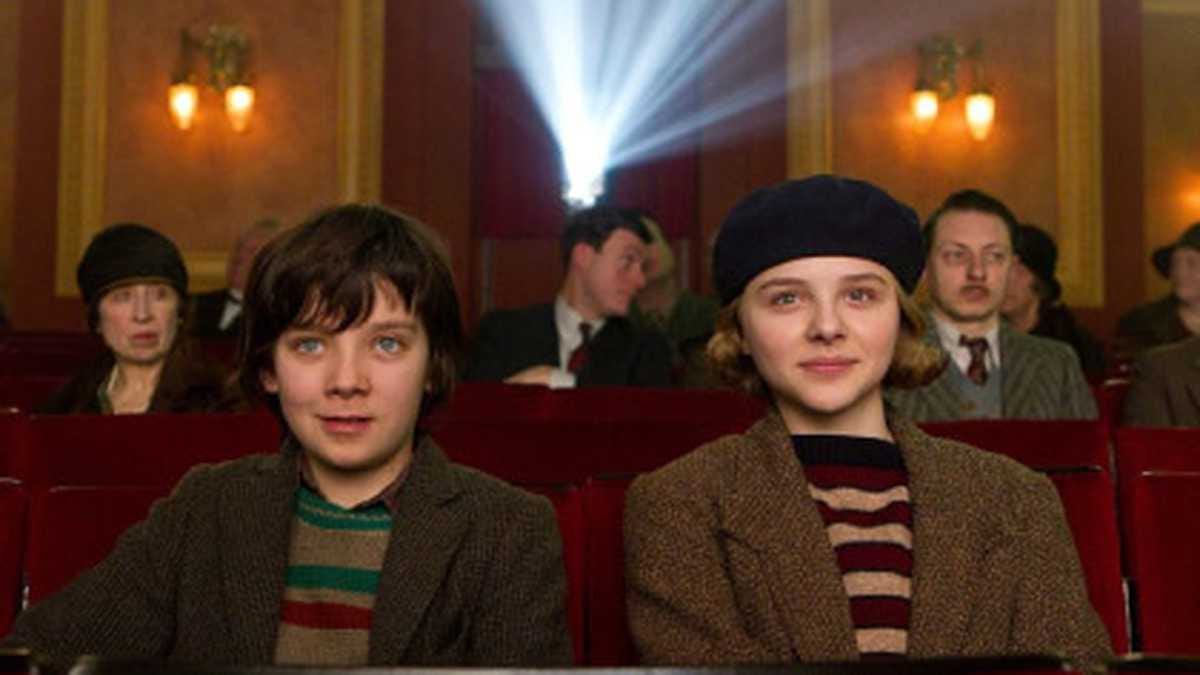

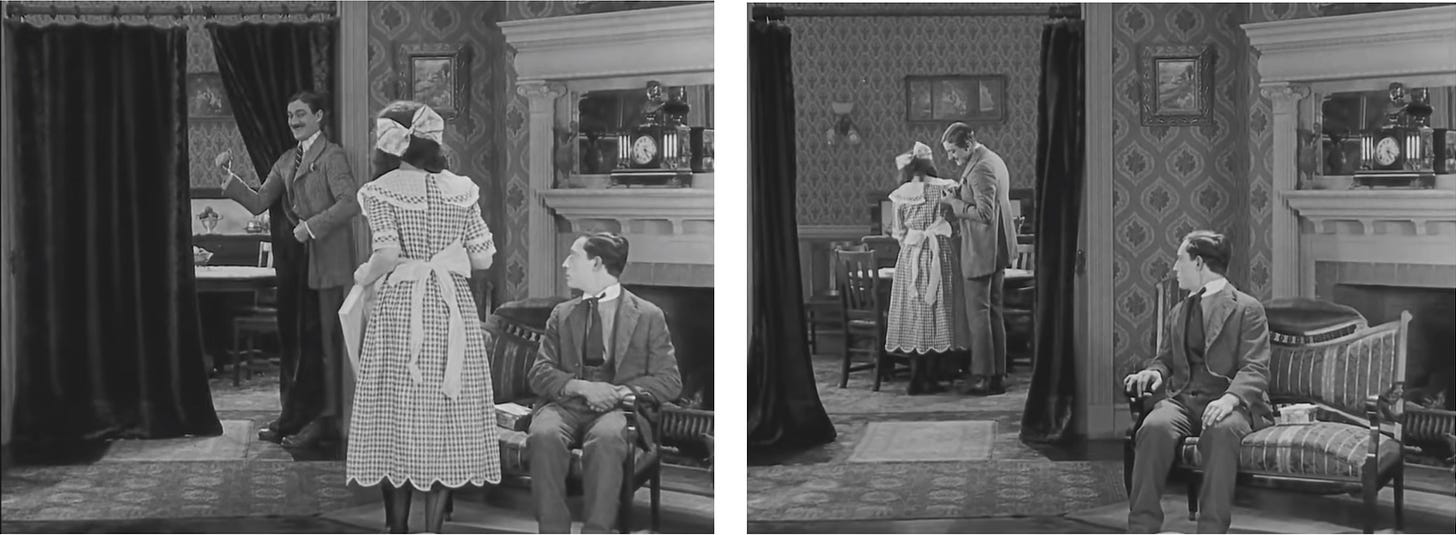
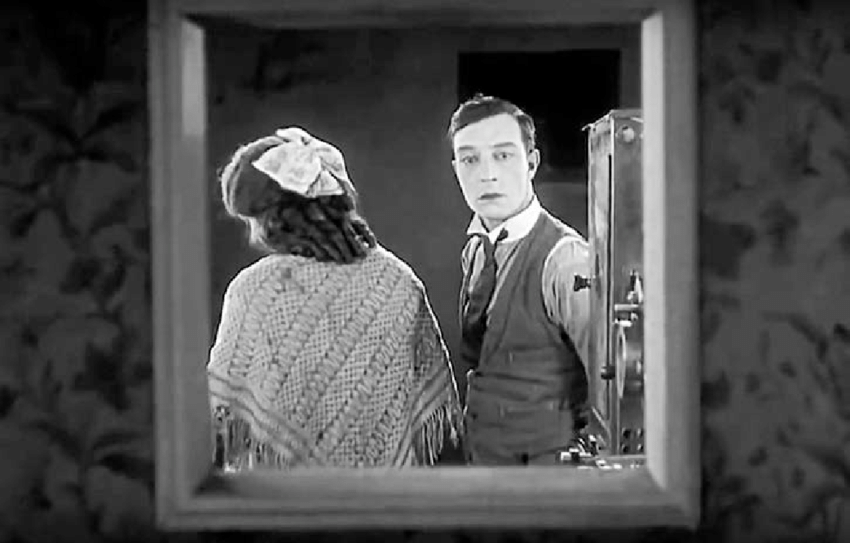
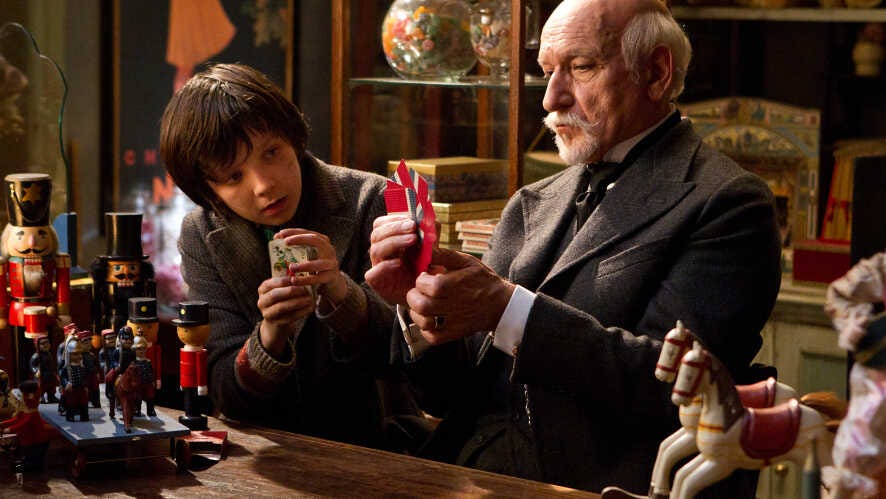
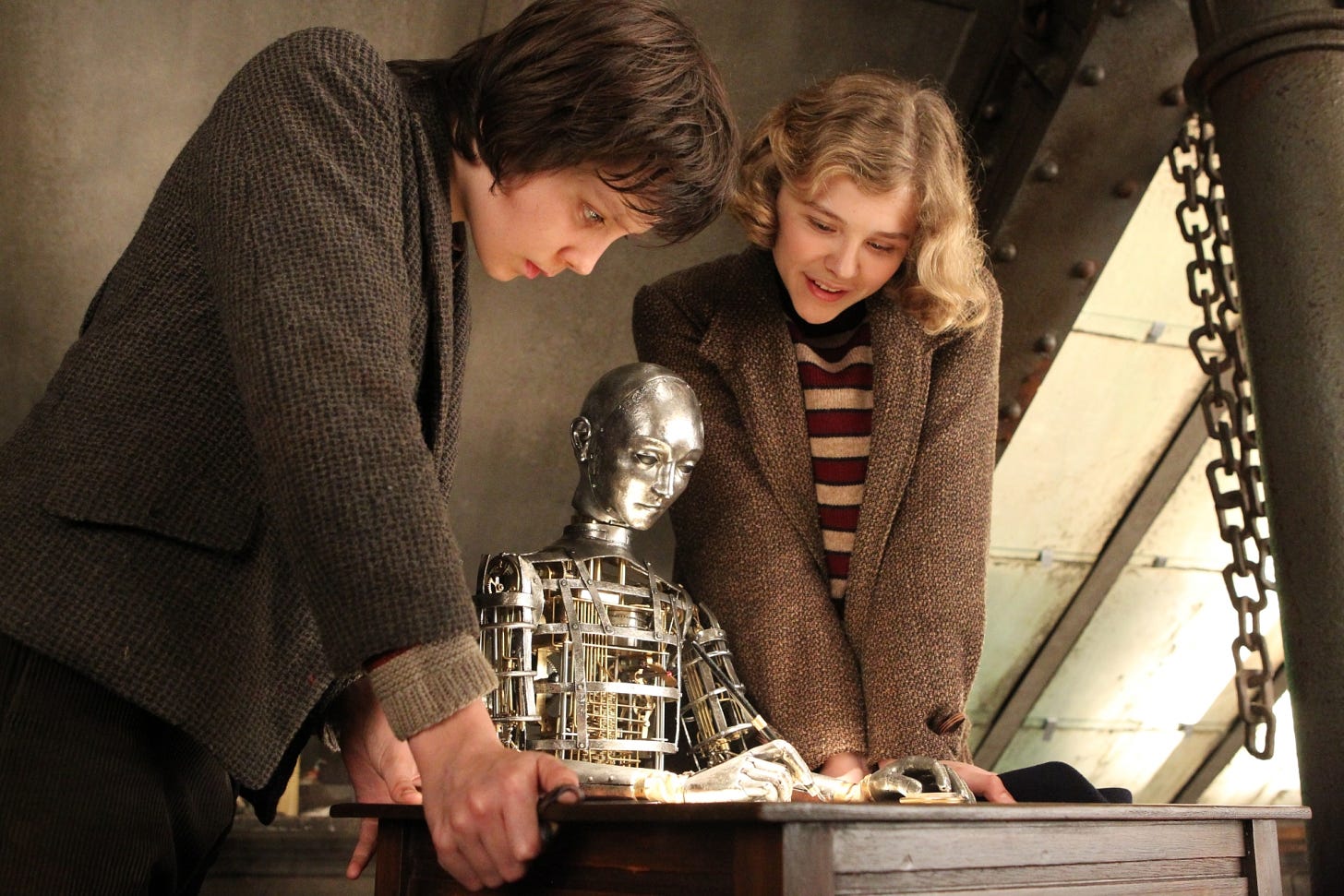
Hugo is one of two 3D movies released during the post-Avatar boom that I deliberately set out to watch in that format. (The other: Herzog's Cave of Forgotten Dreams.) An atypical film for Scorsese, to be sure, but at this point there are enough "outliers" in his filmography (After Hours, The Age of Innocence, Kundun, Silence) that we should really just consider him a filmmaker with range, not one who goes off-reservation periodically.
I also see the whimsical “dropped into danger with a cut”motif, or is it “yanked from danger”in Edge of Tomorrow.